15km up and down the south facing valley wall about 400m
A much better day almost no rain, a few drops and clear snow covered tops all around. We are off about 9am for another short day up out of Nus with some beautiful views across and up the valley.
Plenty of flowers as we swap well made grit paths with tarmac side roads well above the motorway and railwa in the valley bottom. Soon we meet a field of cows with an electric fence some have a shock crossing. Bits of stick strategically wound with conductor may assist crossing.
We come across references, mainly murals on some churches to St Grat a local boy from 4th C Aosta who made bishop and seems to have the whole valley in his care with particular reference to the care of crops and prevention of insect damage. Quite why he has the head of John the Baptist tied to his wrist we never find out.
We continue to follow the 103 the Italian path number for this route down the Aosta valley, it eventually takes us to Chatillon where a seriously deep gorge sends a sizable stream to join the river Dora Baltea. This gorge was bridged in Roman times as this was the most important route into Gaul. It’s remains maybe on the photo of the gorge, or maybe not.
We find our lodging for the night and try to get a timbro (stamp for our pilgrim passports) in the main church without success, though it does have some nice stained glass.
risotto again tonight as we are not carrying half a kilo of rice tomorrow as well as today!
One thought on “25.04.19 Thursday. NUS to Chatillon Another saint!”
Comments are closed.
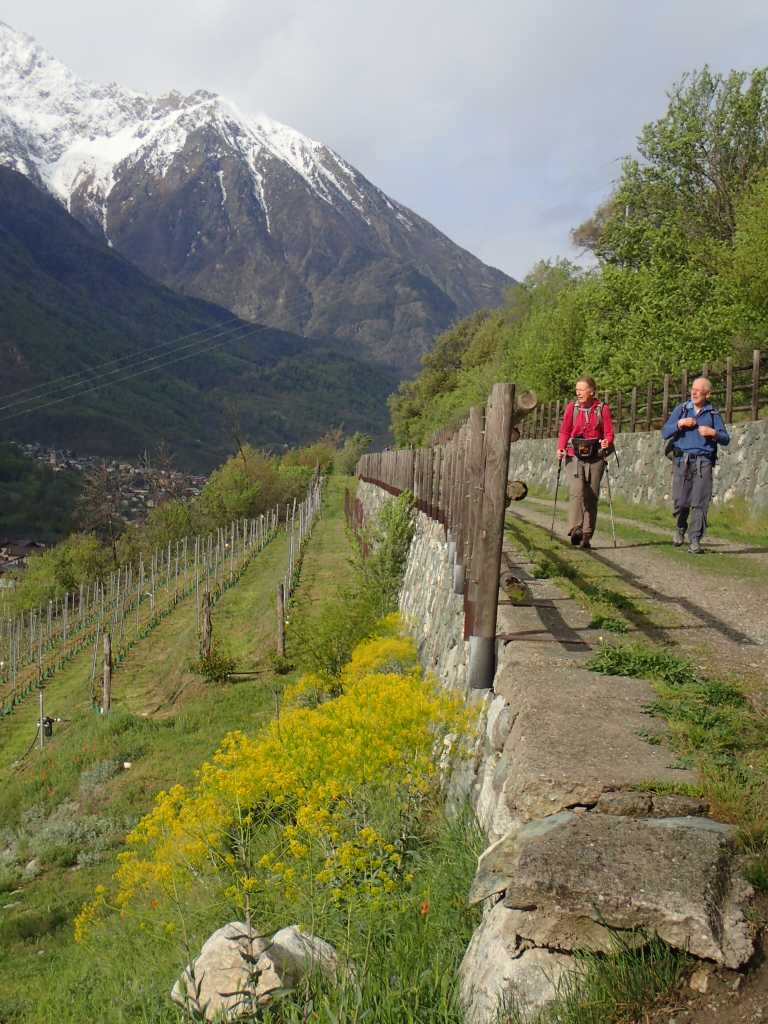
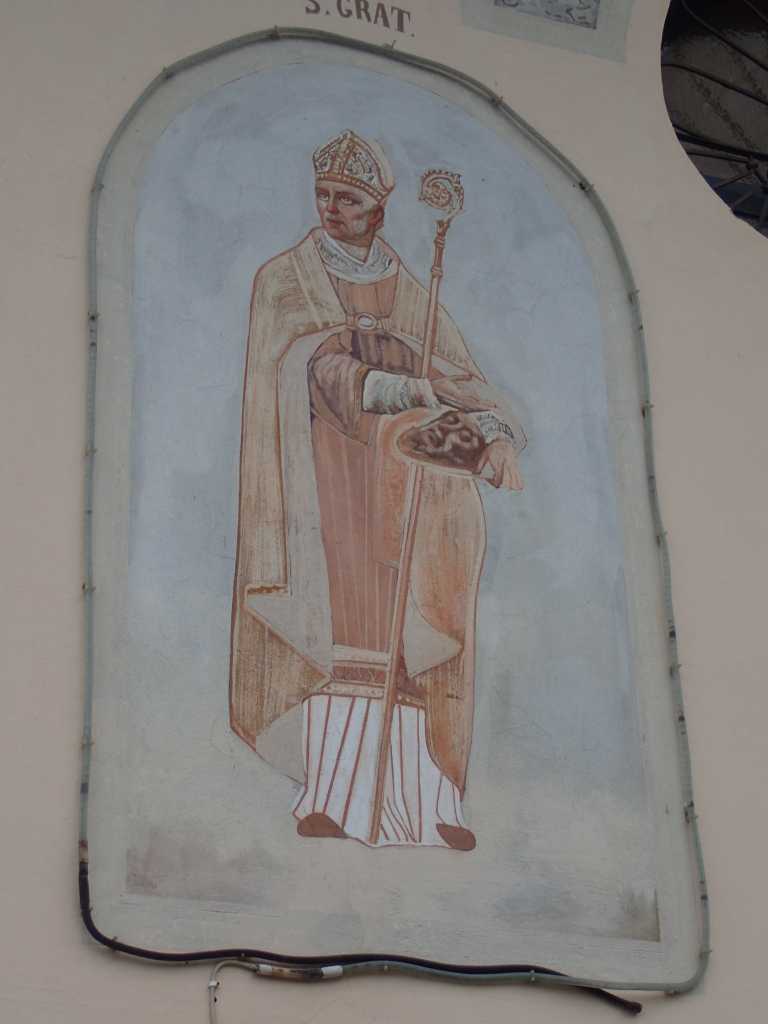
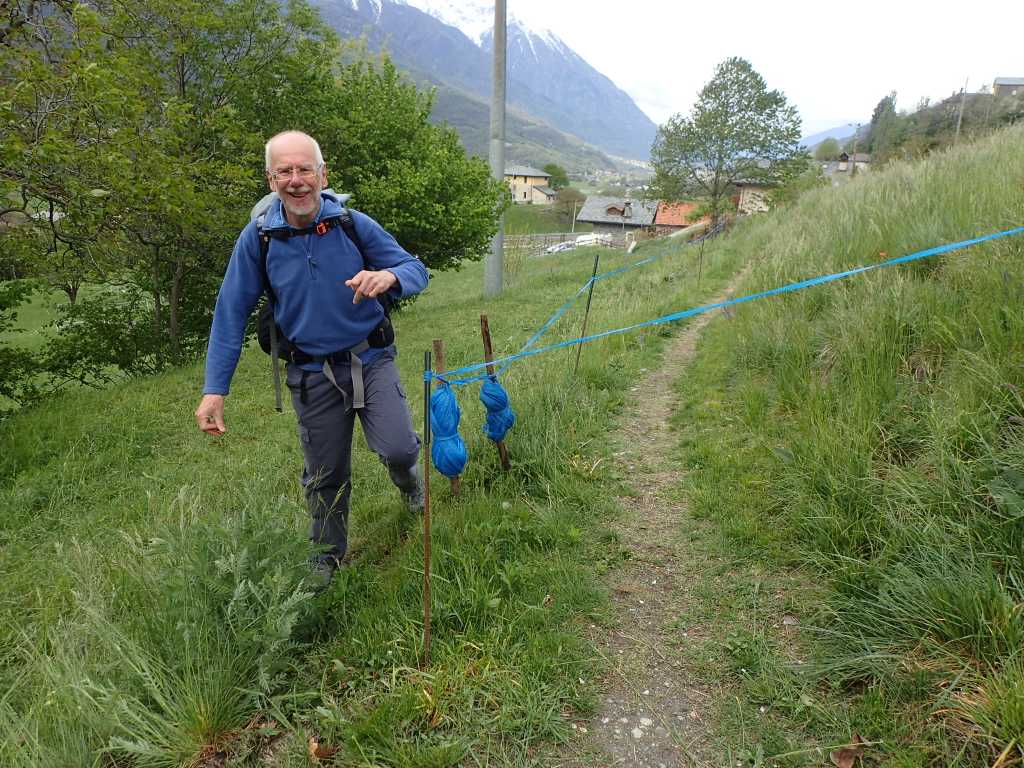
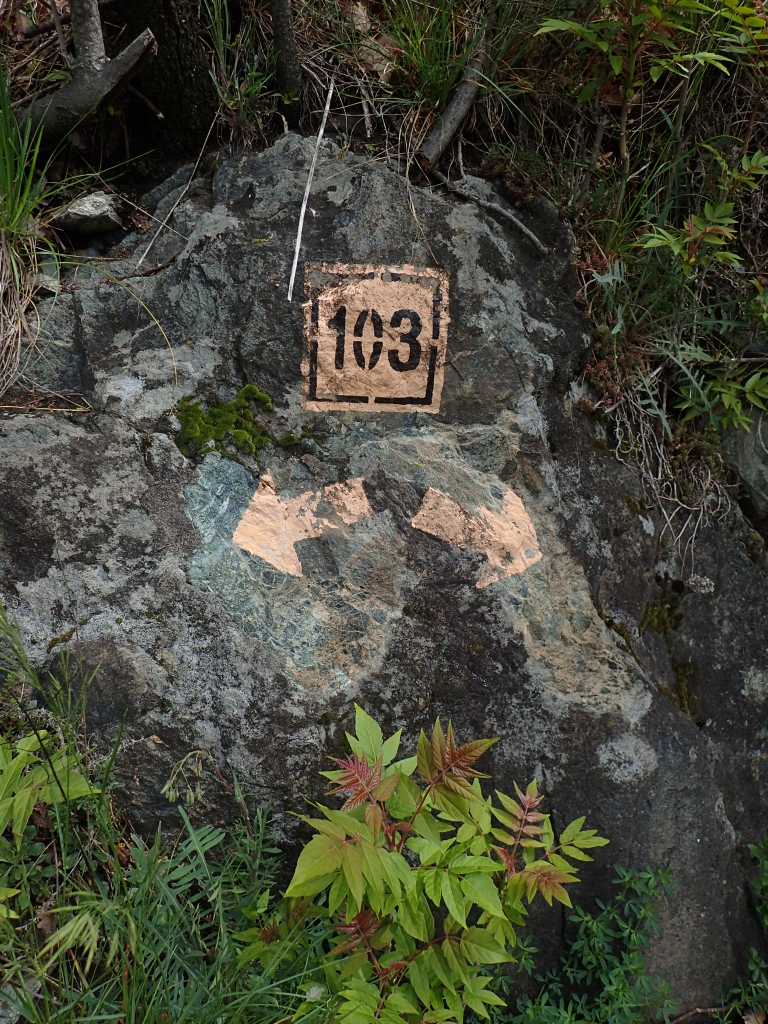
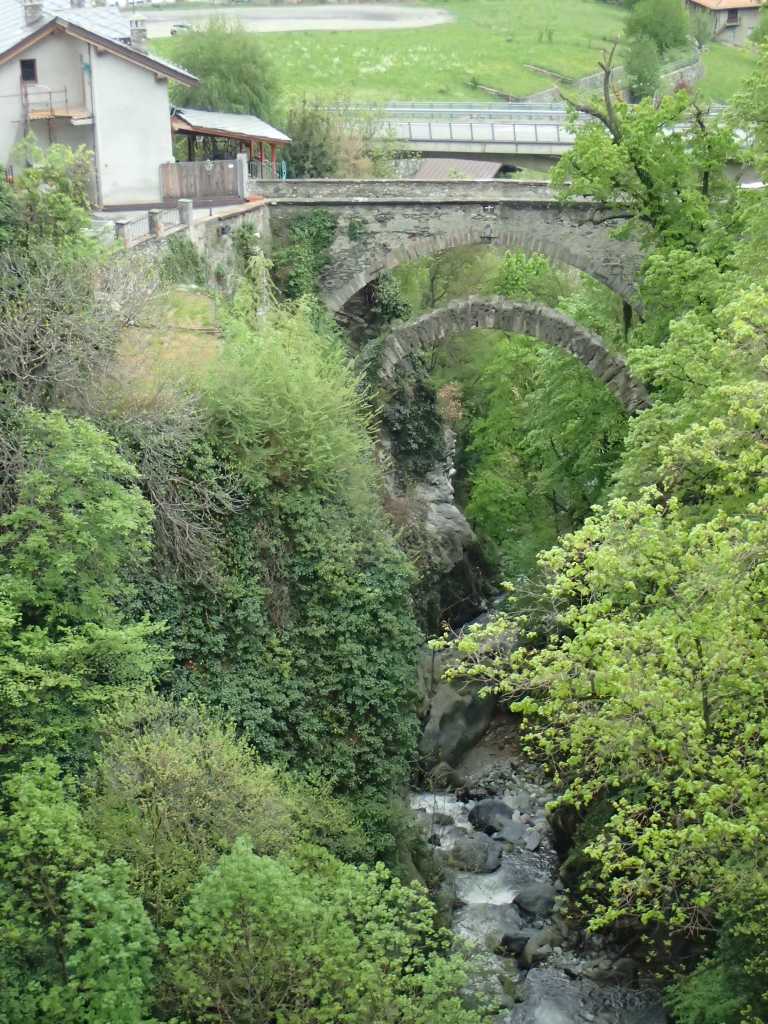
Read up on this on wiki Tim, Re St Grat. A vision experienced at the Pantheon sent him to Aosta. He converted many pagans there and Charlemagne aided him in his mission. By divine command, he was then sent to the Holy Land to find the head of Saint John the Baptist. For this reason, Gratus is sometimes depicted with John the Baptist’s head in iconography. He was accompanied by Saint Jucundus of Aosta [fr] (Italian: Giocondo or French: Joconde). Gratus found the relic concealed in the palace of Herod. Smuggling it out of Jerusalem, Gratus returned to Rome, where churchbells played of their own accord in celebration. Gratus presented John’s head to the Pope; in doing so, the jawbone remained in Gratus’ hand. This was interpreted as a sign, and the Pope allowed him to carry that precious relic back to Aosta. Gratus continued to govern the diocese, while periodically withdrawing to a hermitage with Jucundus.